Day 3,4 – Overnight in Mantra Koodam
On Day 3 of our temple tour, we checked out of our Thanjavur hotel early and visited a few temples before we checked into Mantra Koodam, our hotel in Kumbakonam.
Here are the temples we visited on days 3, 4, 5 before driving back to Chennai.
- Swaminathaswamy Temple, Swamimalai
- Swetha (white) Vinayakar temple
- Dharasuram – Airavateswarar Temple
- Kampaheswarar
- Mantra Koodam
- Gangaikonda Cholapuram
- Adi Kumbeswara Temple
- Chakrapani Temple
- Sarangapani Temple
- Ramaswamy temple
- Vaitheeswaran Koil
- Chidambaram
Swaminathaswamy Temple, Swamimalai – Dedicated to Murugan, this temple sits on the banks of river Cauvery. The temple is believed to be in existence from 2nd century BC and modified during the Chola period. It is one of the Arupadaiveedu – six abodes of Lord Murugan.
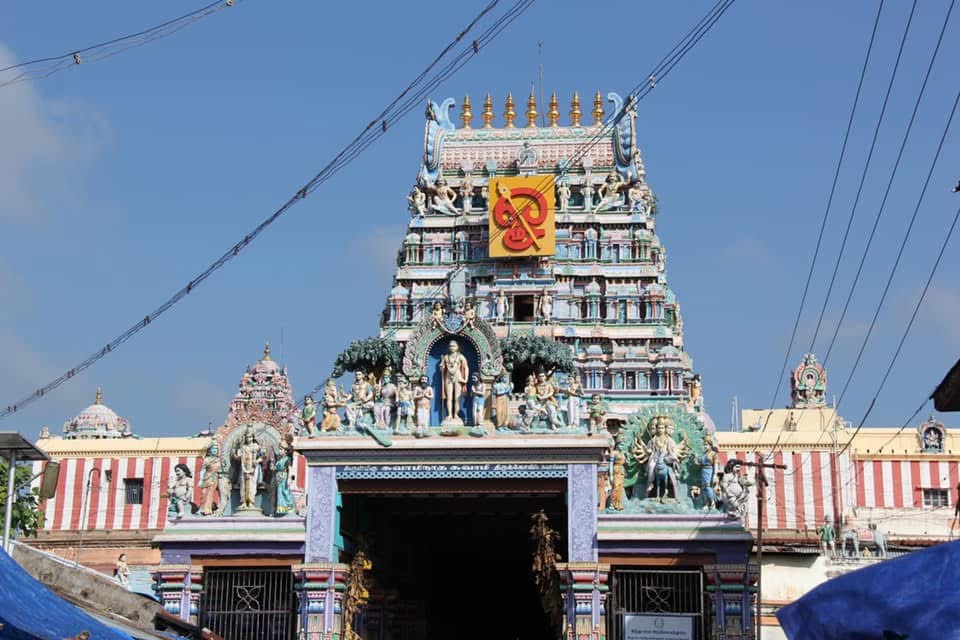
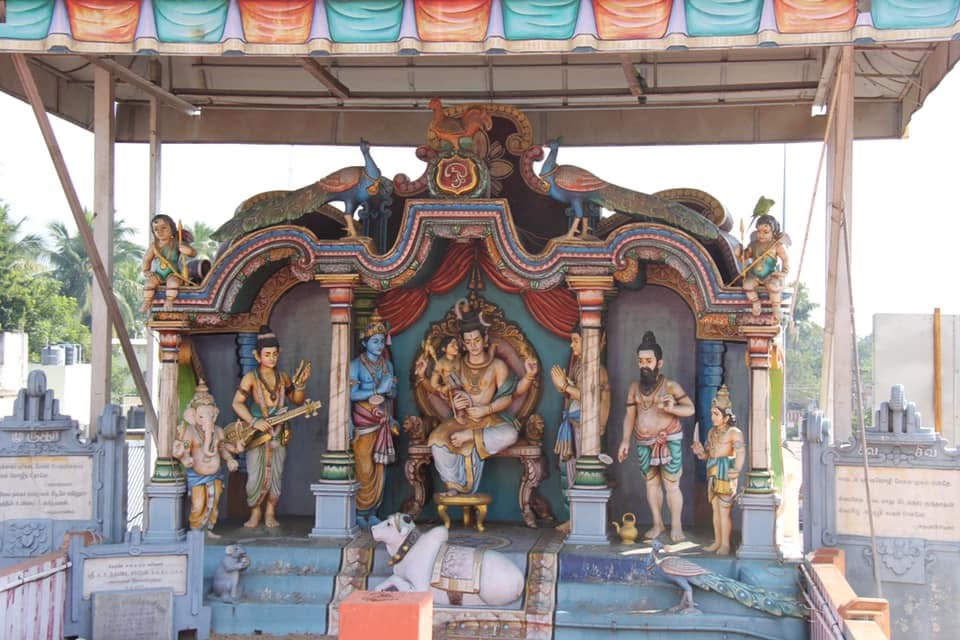
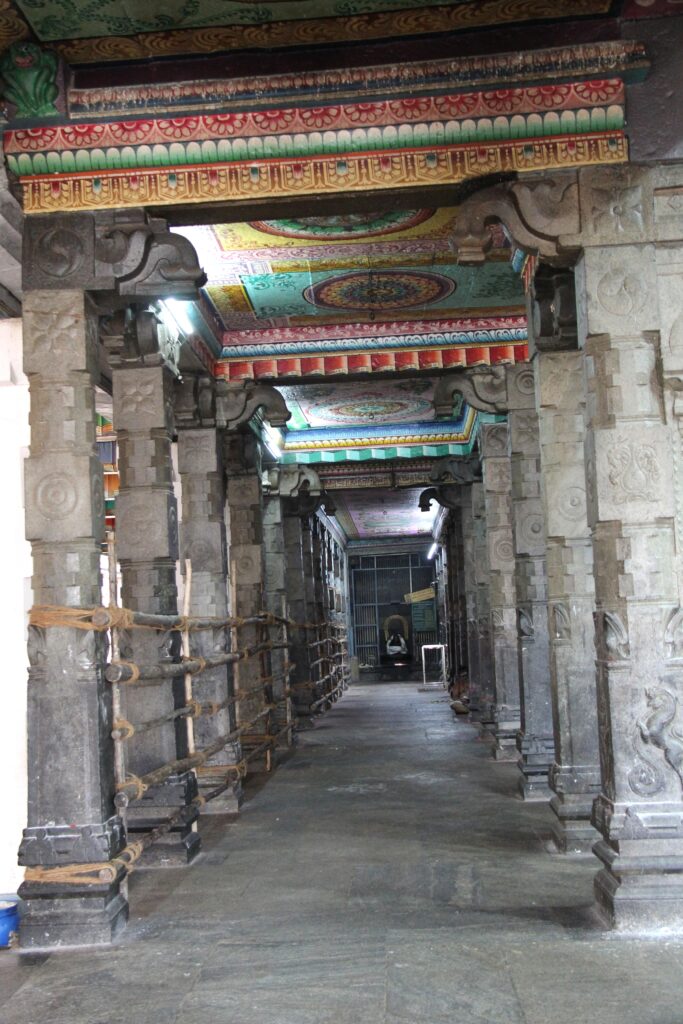
Swetha (white) Vinayakar temple – Located in the village of Thiruvalanchuzhi (named after the twisted flow of the river nearby), this temple is believed to be between 1000 and 2000 years old. The Ganesha idol is white and quite small, supposedly made of sea sand. It also houses a temple for Shiva (Sadaimudinadar – சடைமுடிநாதர்)
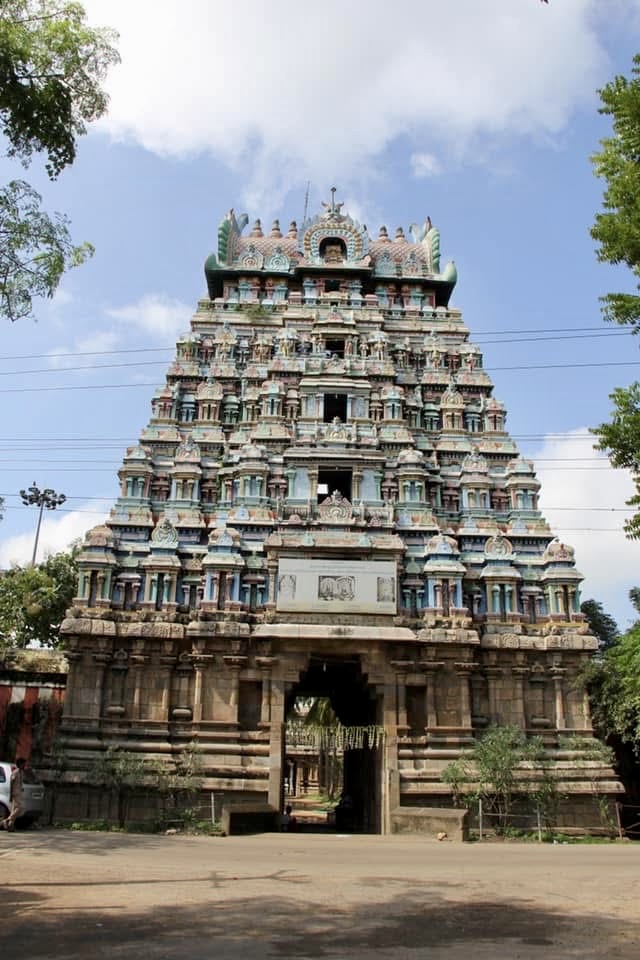
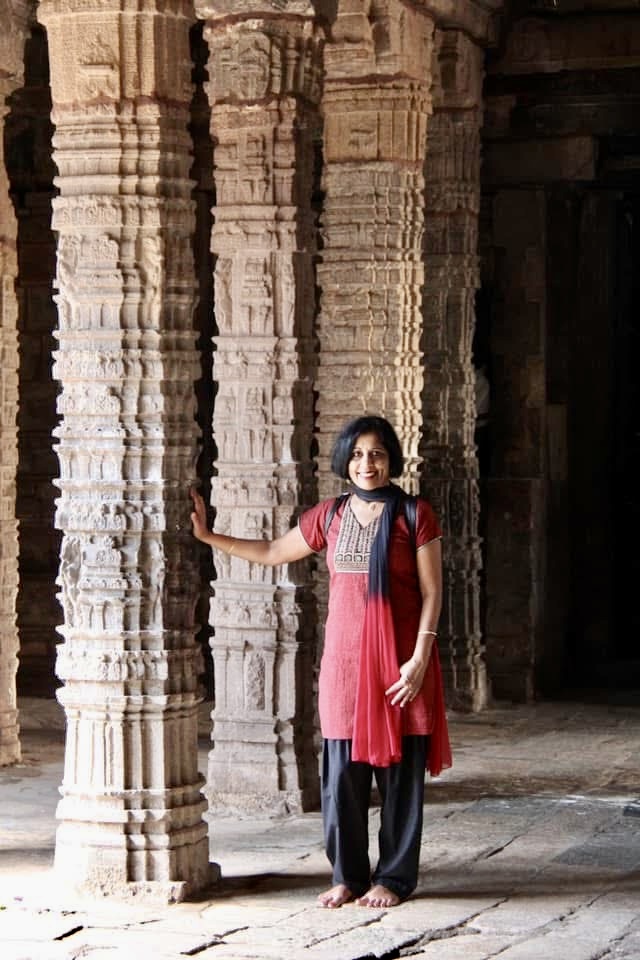
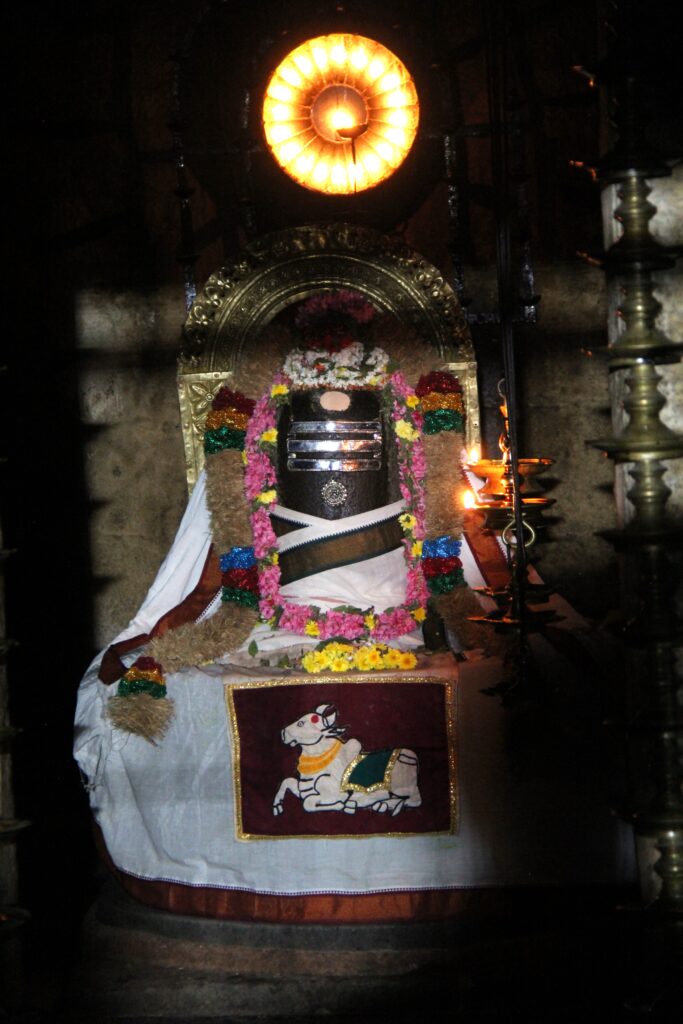
Kampaheswarar temple in Tribuvanam – This temple was constructed during the Chola period in 13th century and dedicated to Lord Shiva. In addition to the main deity (Lingam – Kampaheswarar), there are Sannadhis for Dharmasamvardani and Sarabeswarar. The huge gopuram above lord Shiva has an architecture similar to the Brihadishvara and Airavateswarar temples.
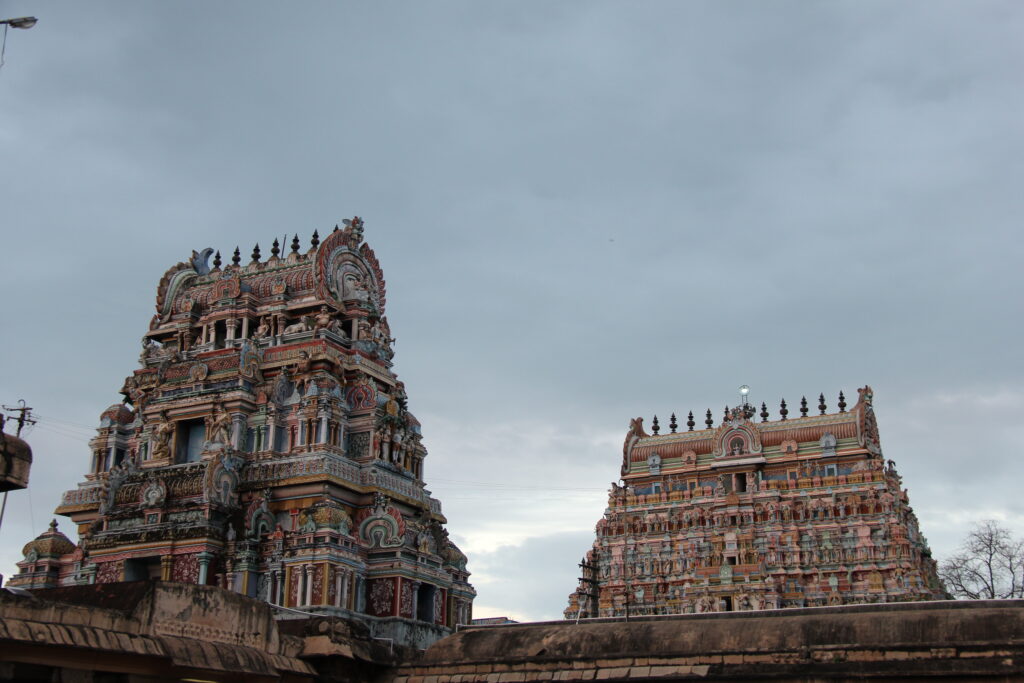
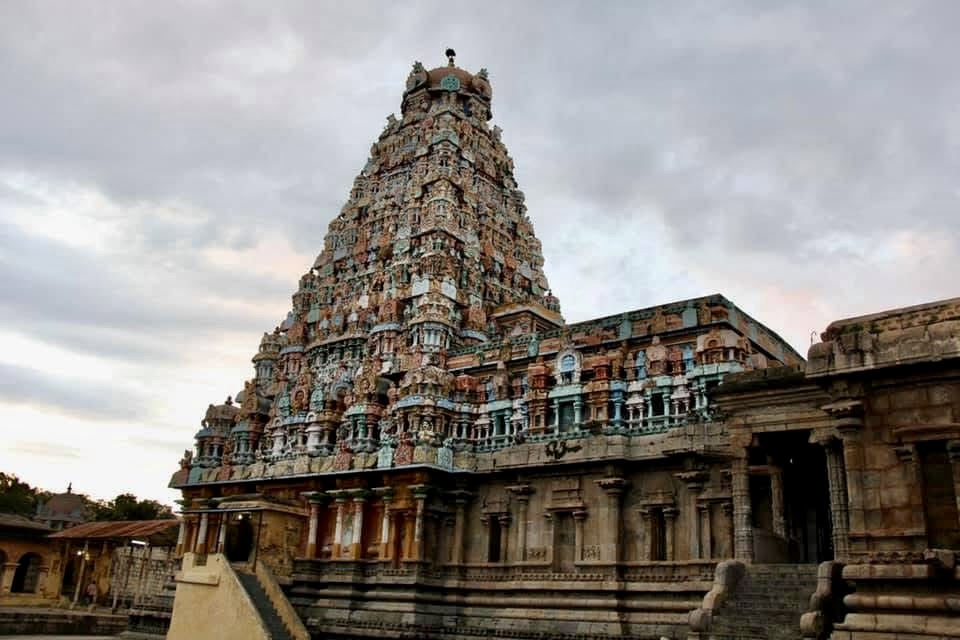
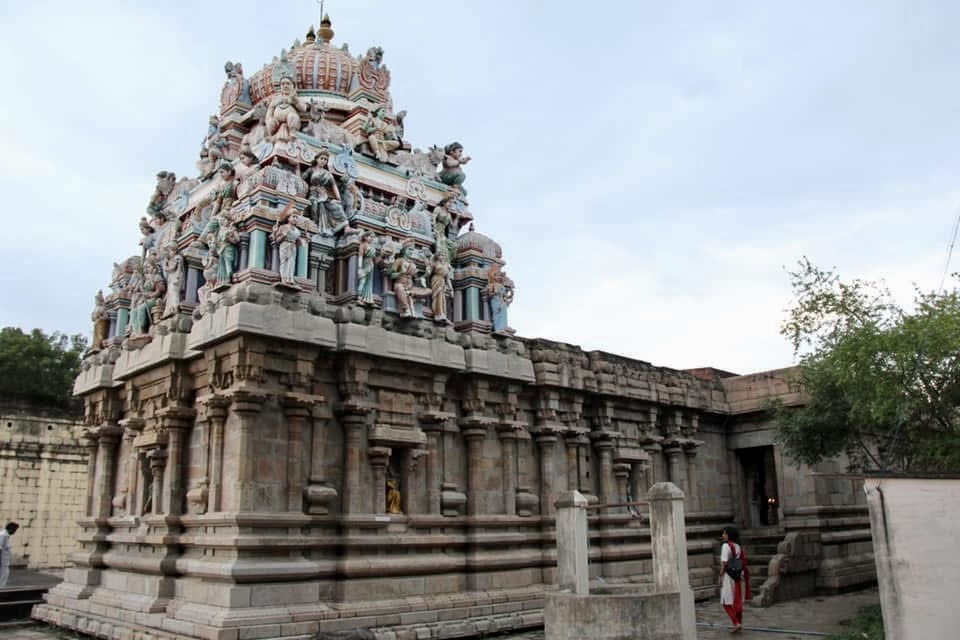
Dharasuram – Airavateswarar Temple – Built in the 12th century by Raja Raja Chola II (grandson of Raja Raja Chola who built the Brihadishvara or big temple in Thanjavur) and dedicated to Lord Shiva. The temple is a part of the UNESCO World Heritage Site known as the ‘Great Living Chola Temples’ along with the Chola-era Gangaikonda Cholapuram temple and Brihadishvara temples. It is the smallest of the 3 Chola temples but has lot more exquisite carvings all around with emphasis on dance postures.
We used a guide who was available at the entrance. It is worth paying a guide, because the amount of detail is extensive and some knowledgeable person providing explanations is important
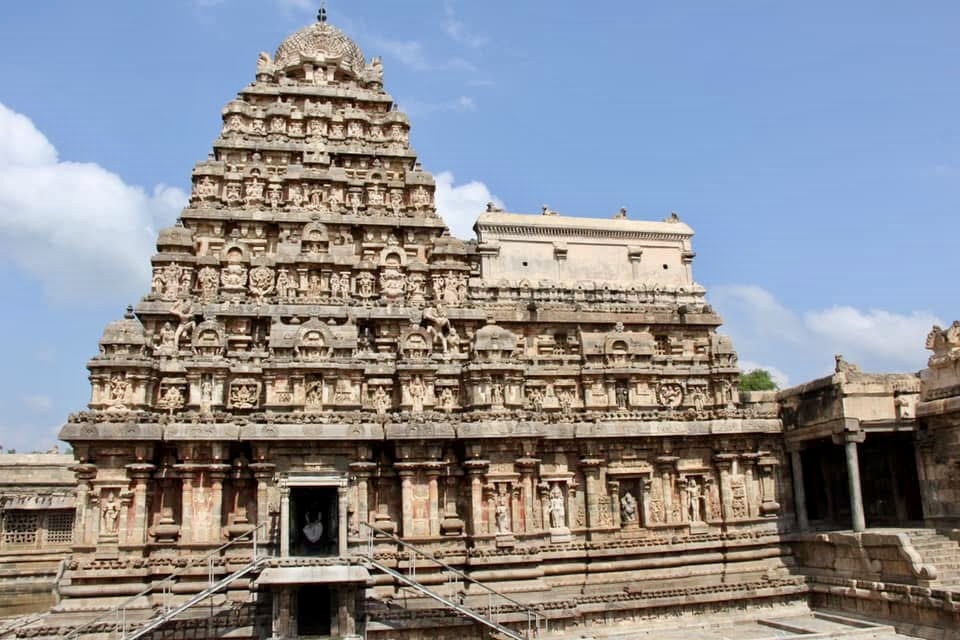
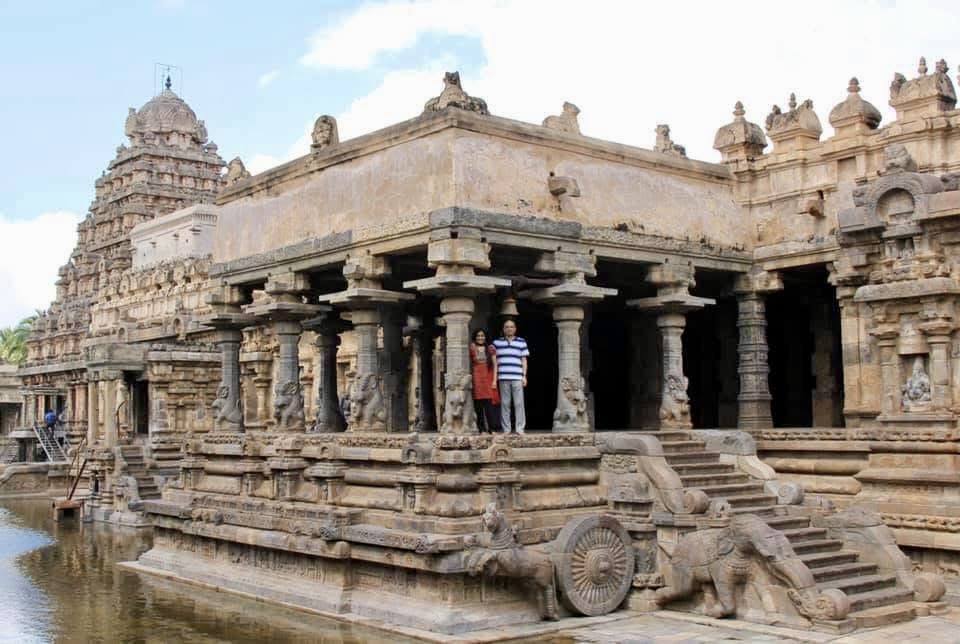
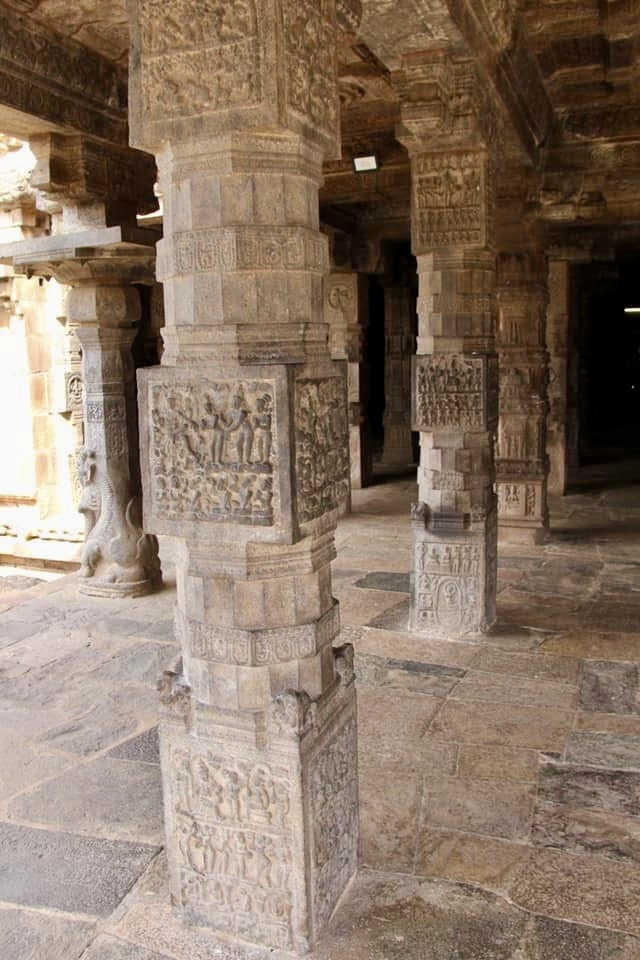
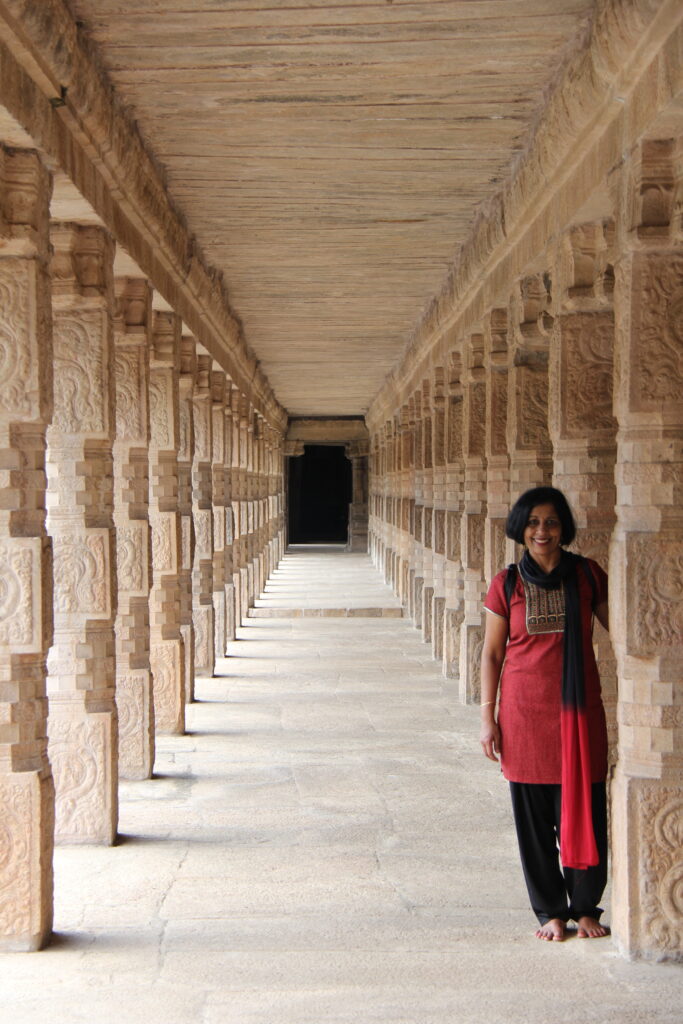
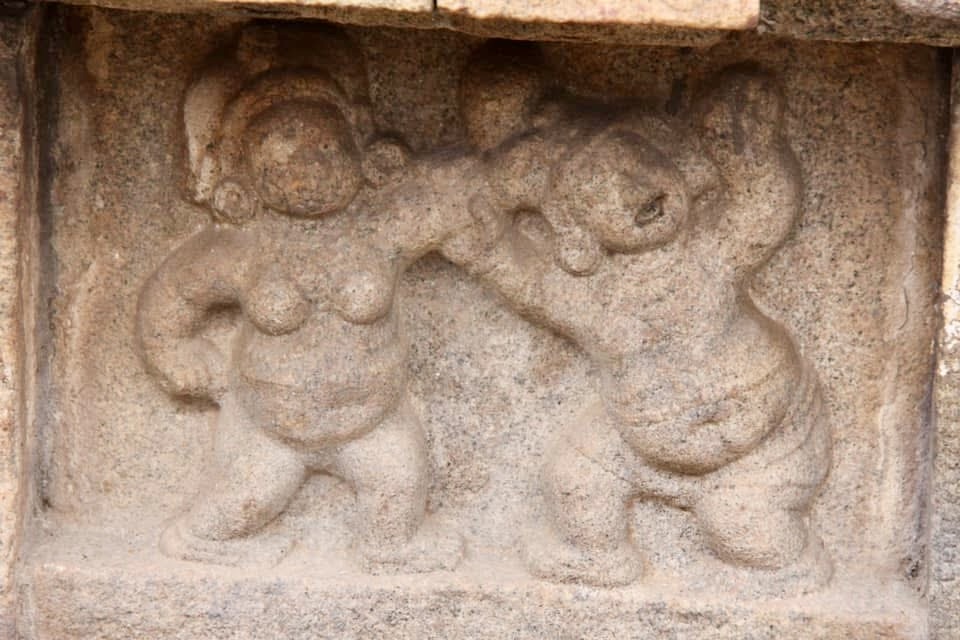
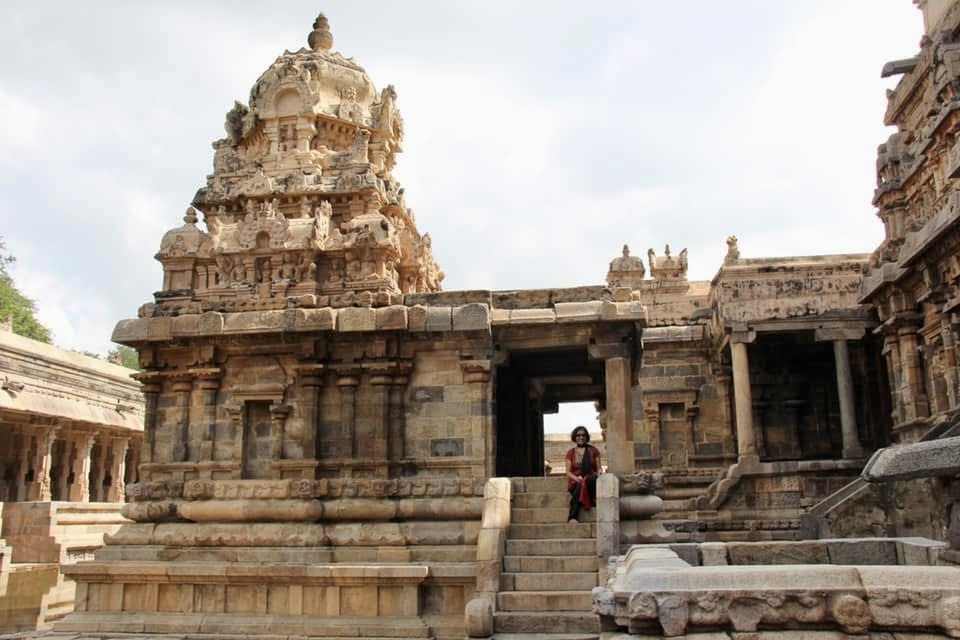
Mantra Koodam – In the afternoon, we checked into our hotel in Kumbakonam. Mantra Koodam is an eco friendly resort with great food, ambience, ayurvedic massages, and spacious rooms. Spread over 15 acres, the property is flanked by the Veera Chozha and Cauvery rivers on either side and provides easy access to the temples in Kumbakonam as well as the 2 other Chola temples – Darasuram and Gangaikonda Cholapuram.
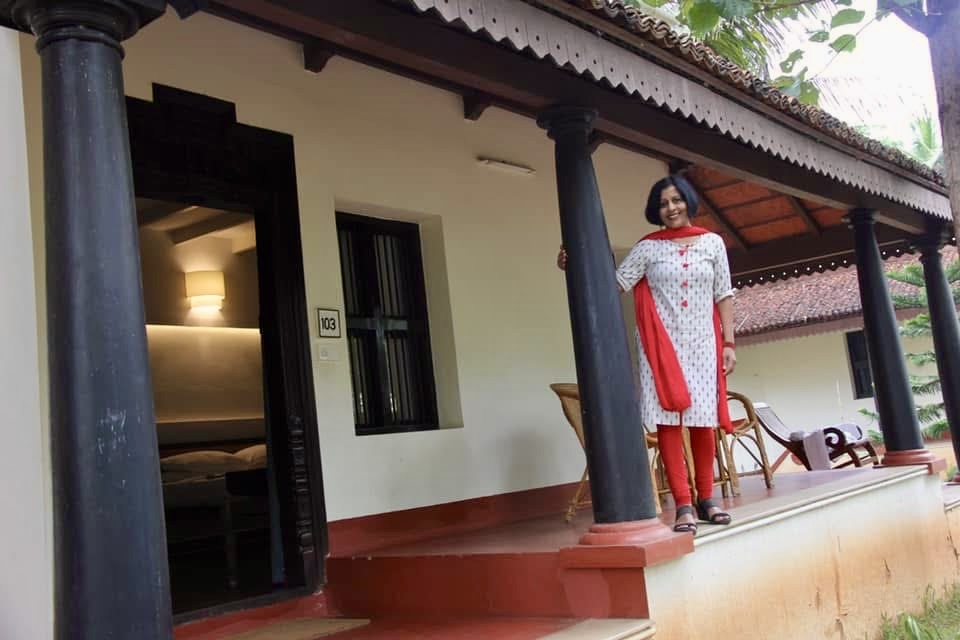
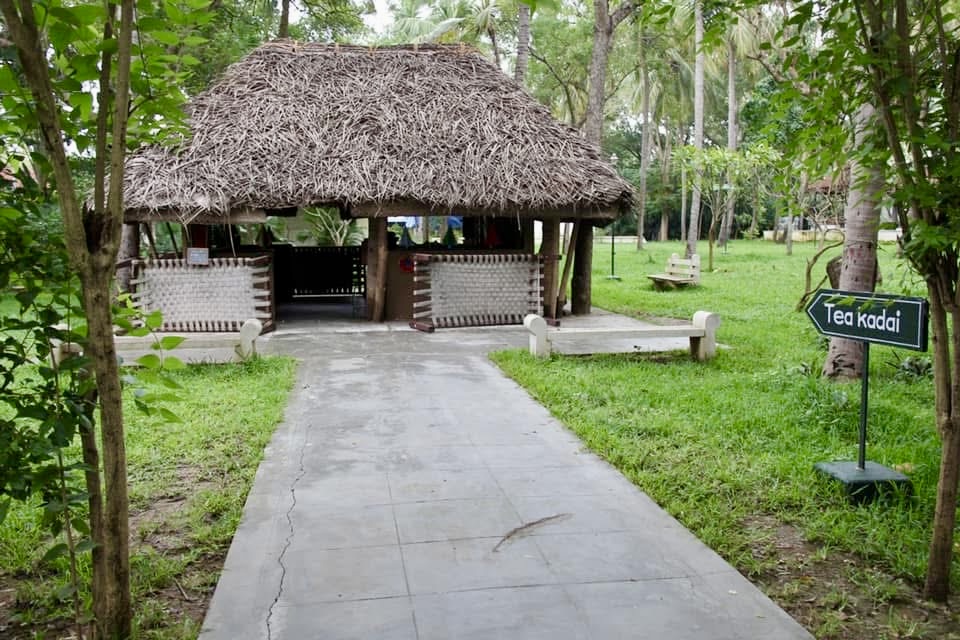
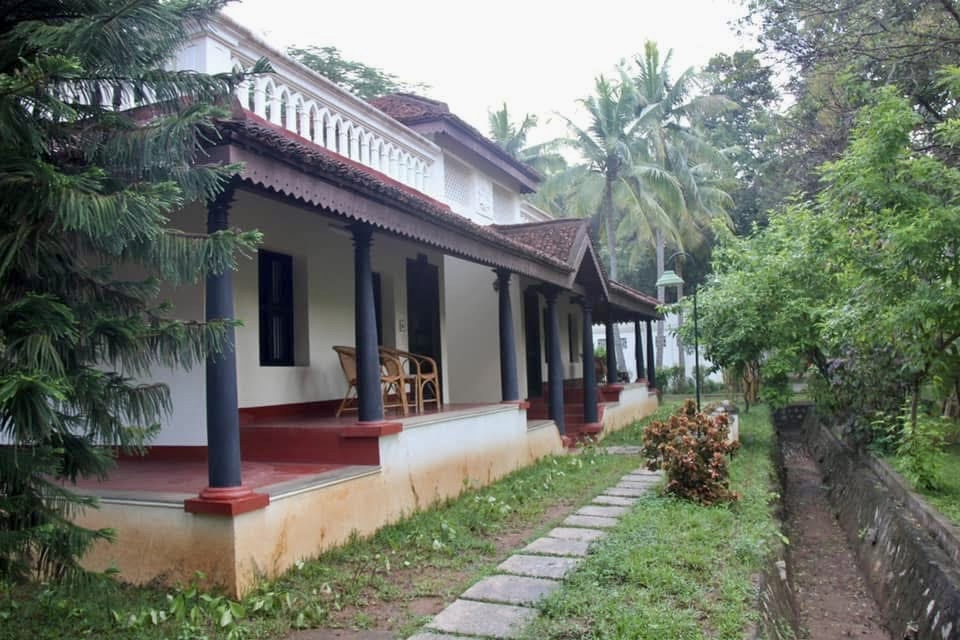
Gangaikonda Cholapuram – After a delicious lunch and a well deserved rest at Mantra Koodam, we drove to Gangaikonda Cholapuram, the third Chola temple built in the 12th century by Rajendra Chola (son of Raja Raja Chola who built the big temple in Thanjavur). Another UNESCO World Heritage Site, we were not surprised to notice that its architecture was similar to the Brihadishvara and Airavateswarar temples. Dedicated to Lord Shiva, the shrine has a 13 feet tall lingam, one of the tallest in any Shiva temple.
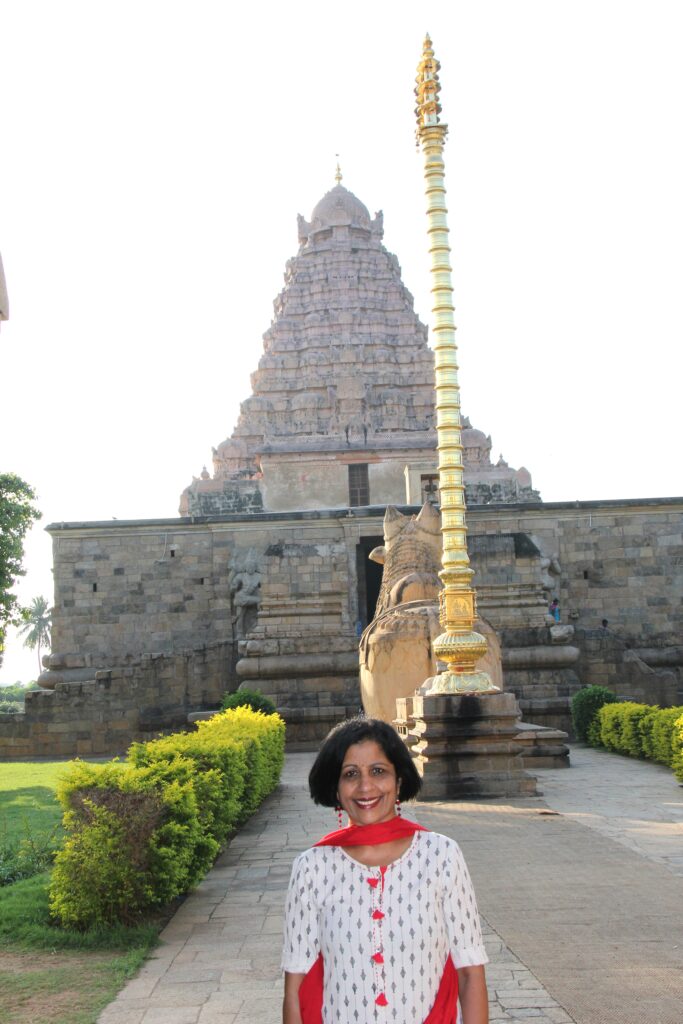

At the temple entrance is a majestic sized Nandi. Nandi is a sacred bull that serves as the mount and attendant of Lord Shiva and can be found at entrances to all Shiva temples.
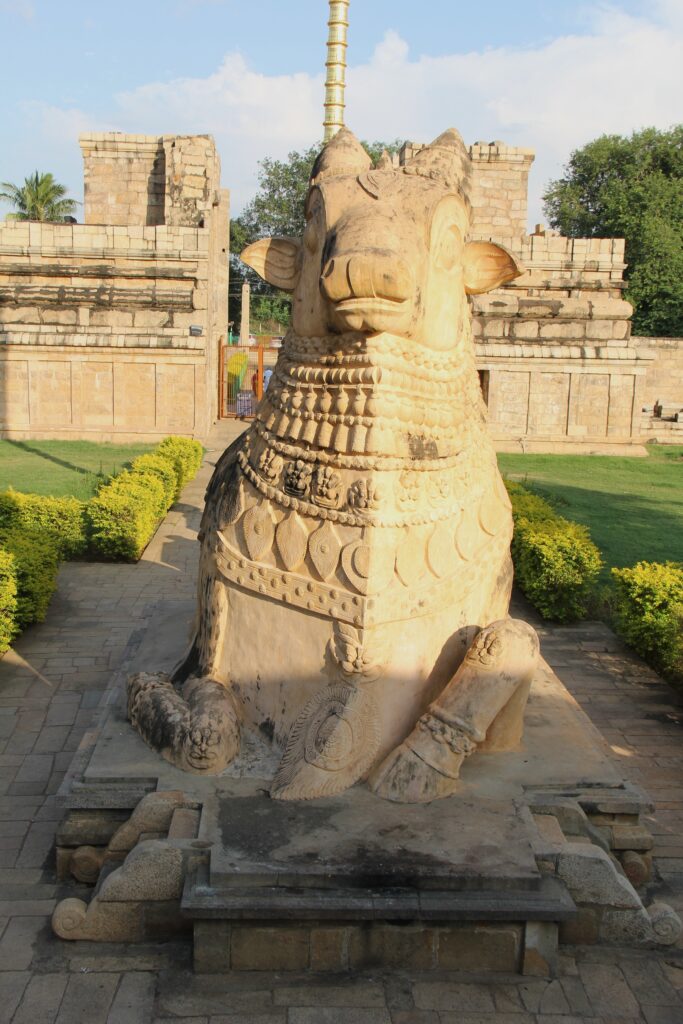
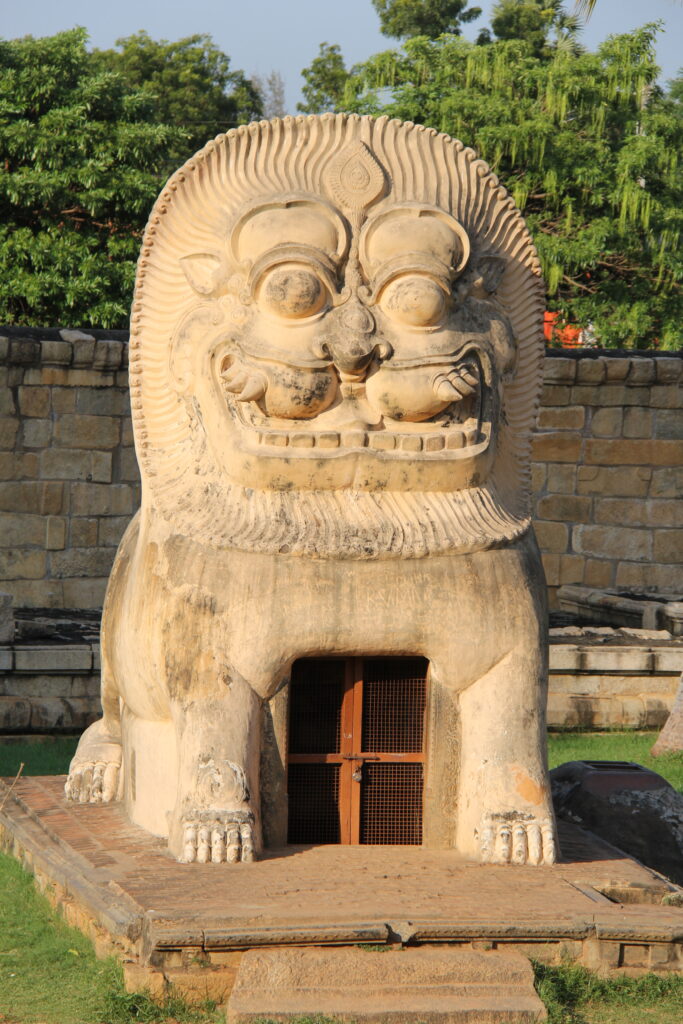
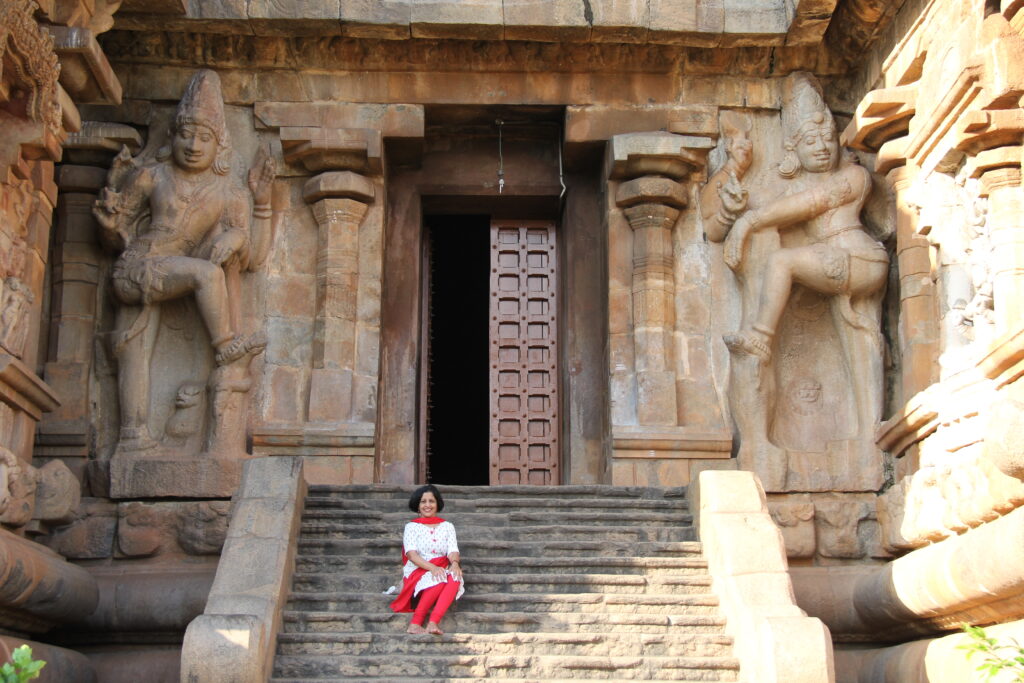
Adi Kumbeswarar temple – Kumbakonam is derived from Kumbeswarar. Dedicated to lord Shiva, the temple covers 2803 square meters and has 4 stunning gopurams. It was Built during the Chola times in the 9th century and expanded in the 16th century and considered by many as one of the finest temples in Kumbakonam.
About Yali – a Hindu mythological creature, portrayed with the head and the body of a lion, the trunk and the tusks of an elephant, and sometimes bearing horse-like features. The creature is represented in many South Indian temples, often sculpted onto the pillars.
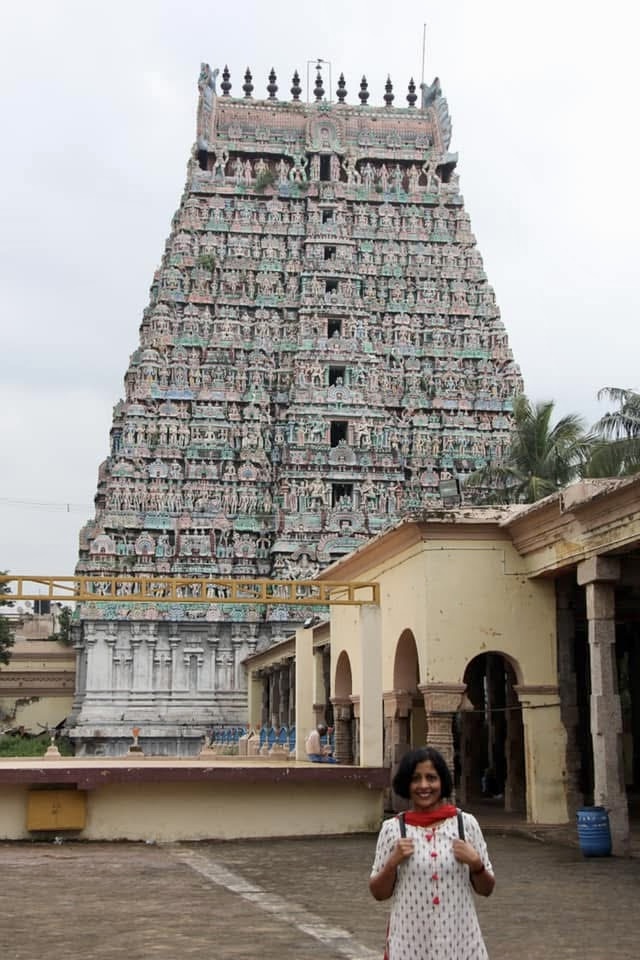
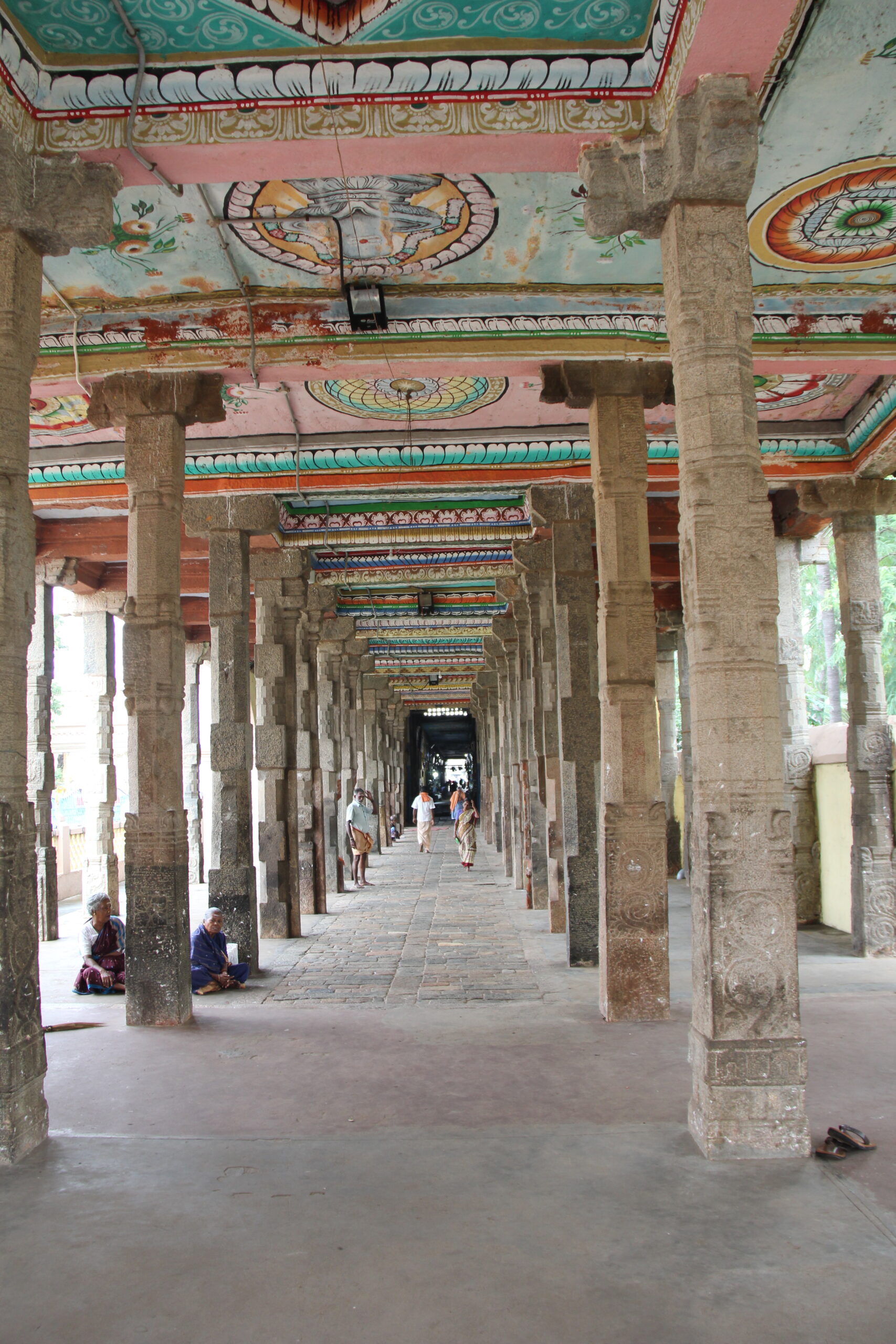

Chakrapani Temple – The temple is dedicated to Lord Vishnu (or Chakrapani). The temple is believed to be built in the 15th century under Nayaka rule based on the temple’s architecture and motifs. Lord Vishnu is worshipped in the form of a discus or Chakra. The lord is seen as Chakrapani with eight arms and Sudarshanavalli Thayar.
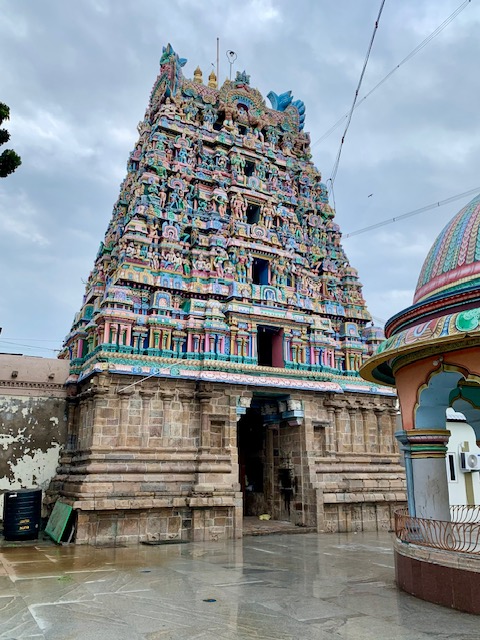
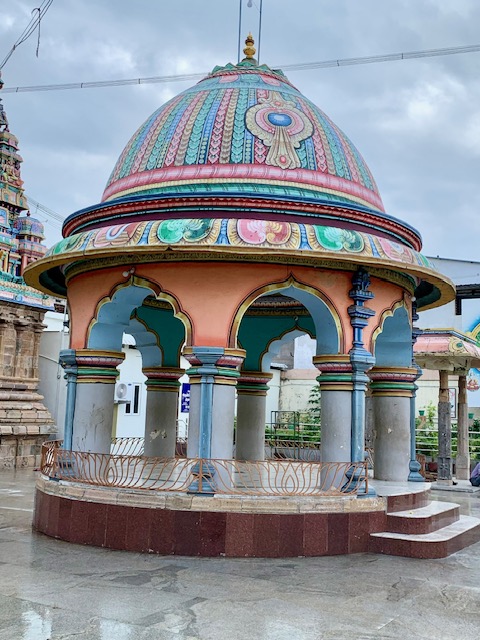
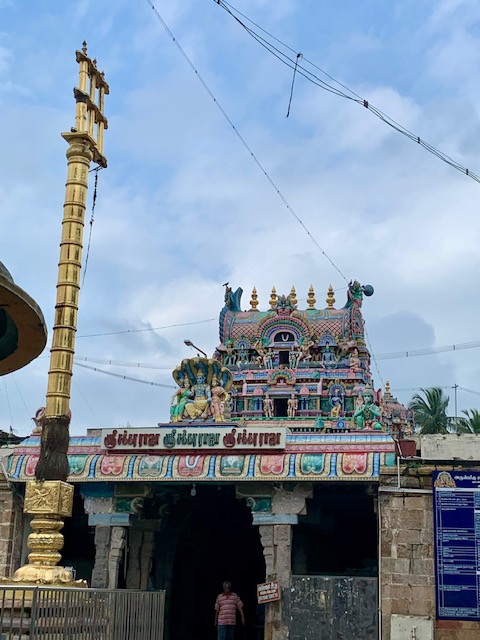
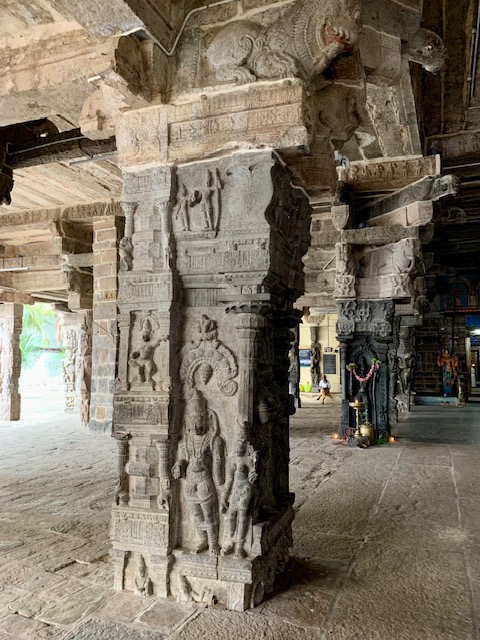
Sarangapani Temple – Dedicated to Lord Vishnu, this temple is one of the 108 Divya Desams. Sarangapani is Kumbakonam’s largest Vishnu temple with the tallest tower or gopuram.
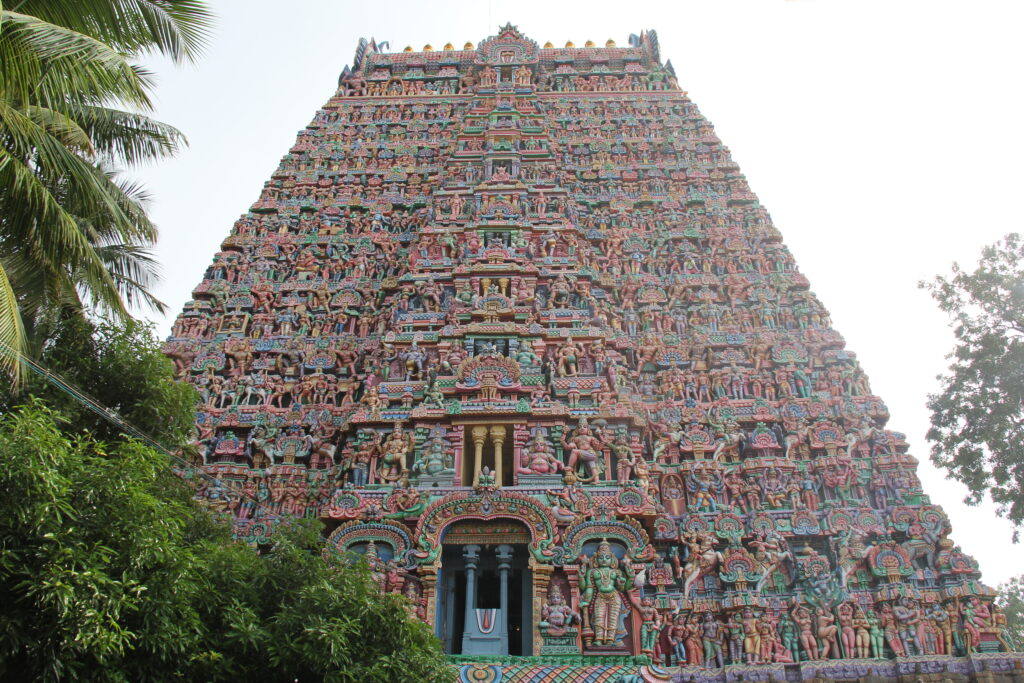
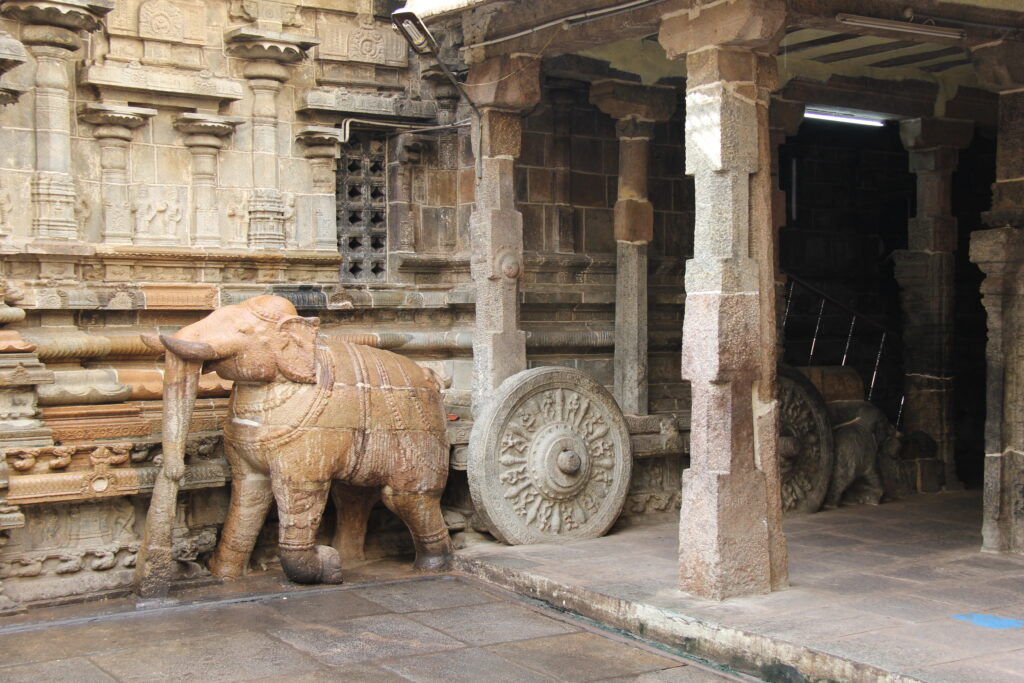
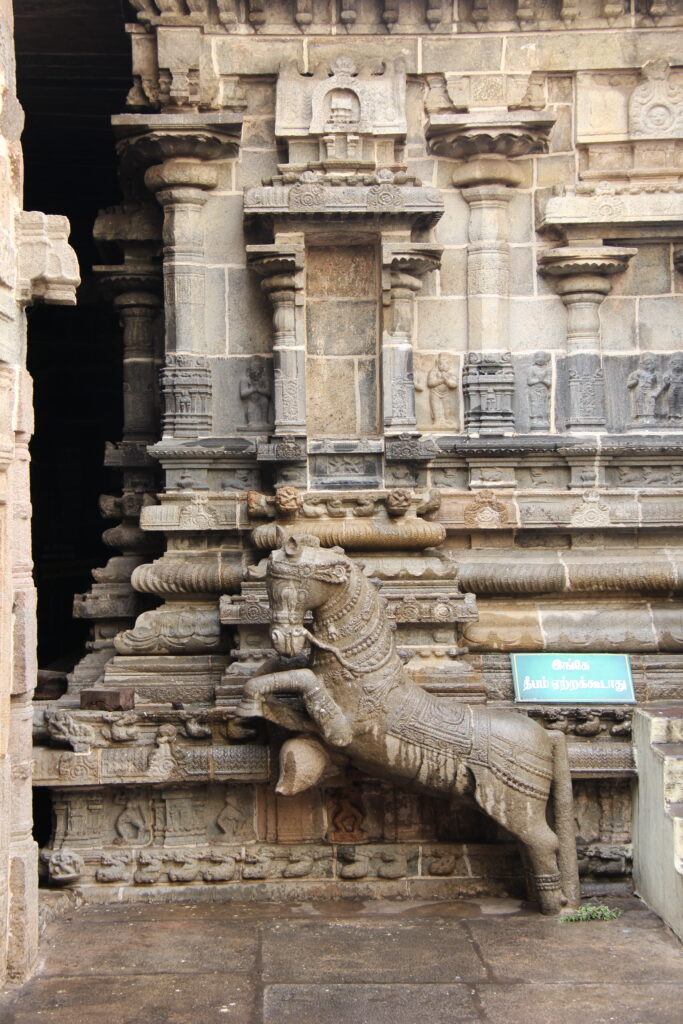
Ramaswamy temple – This temple was built during the 16th century and dedicated to god Rama. The temple has paintings of the Ramayana on its walls that tell the entire story of Rama. The paintings are believed to have been created during the Thanjavur Nayak period and enhanced during the Thanjavur Maratha kingdom. The paintings are located on the walls of the temple’s prakaram, or closed precincts.


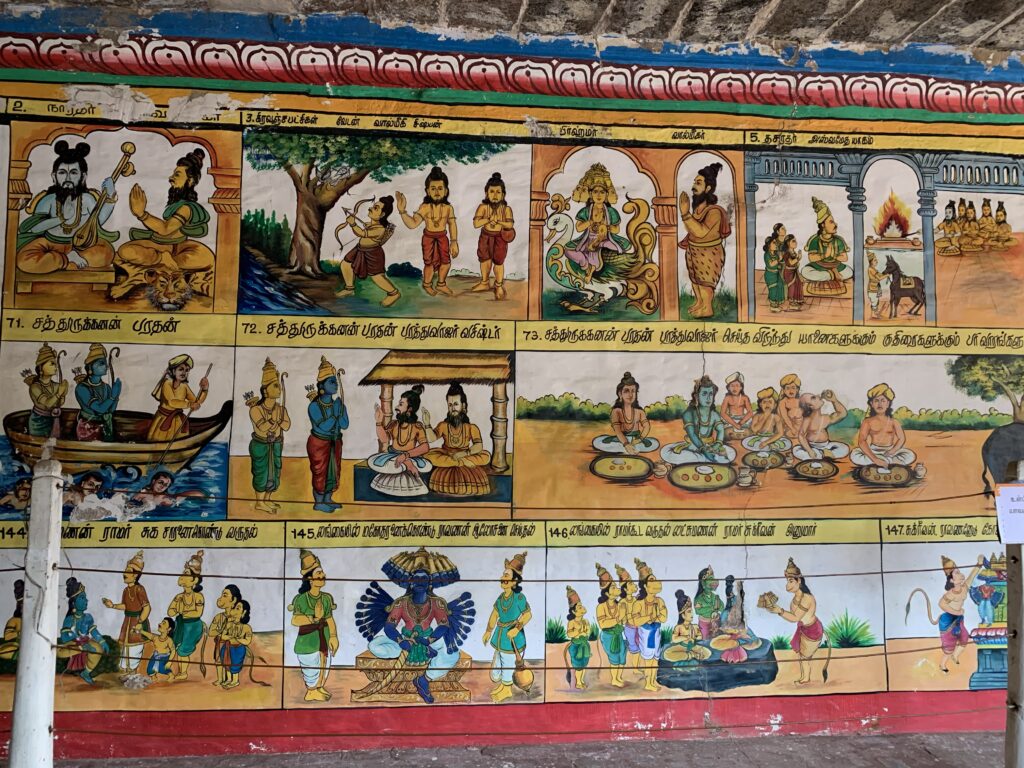
Vaitheeswaran Koil – Dedicated to lord Shiva where he is worshipped as Vaidyanathar or Vaitheeswaran meaning the “God of healing” and it is believed that prayers to Vaitheeswaran can cure diseases. The holy waters of the Siddhamirtham tank within the temple complex contains nectar, and a holy dip is believed to cure all diseases.
On the day we went, we were disappointed with the upkeep of the temple on the whole, dirt & bad smell inside the Sannadhi and the tank, which was brimming with green colored water. Not sure if they were restoring the temple, the gopuram looked badly maintained too.
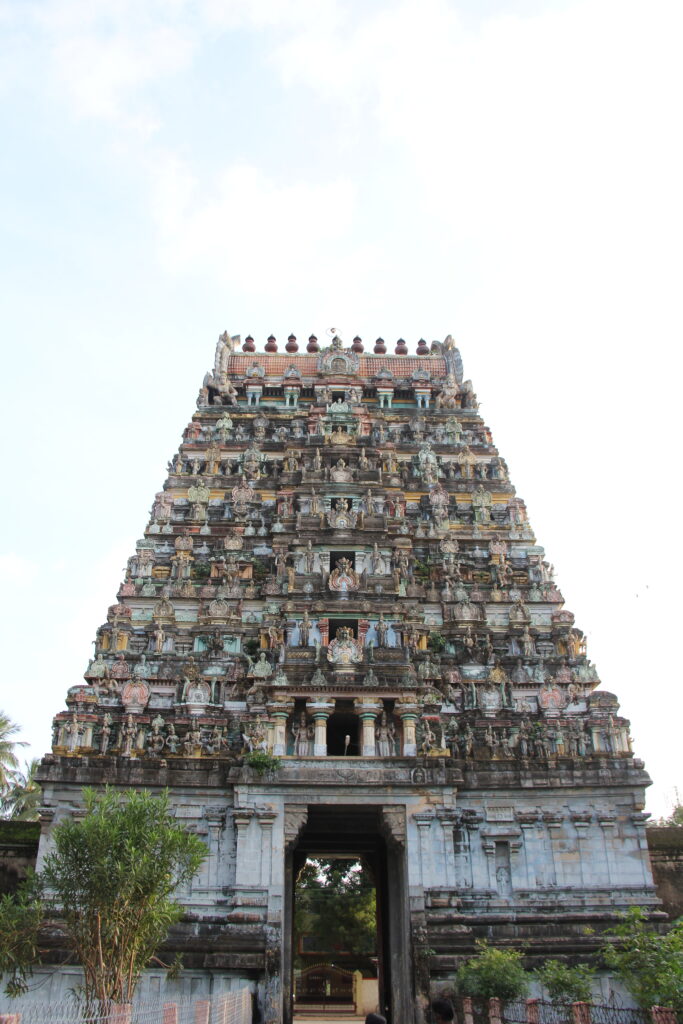
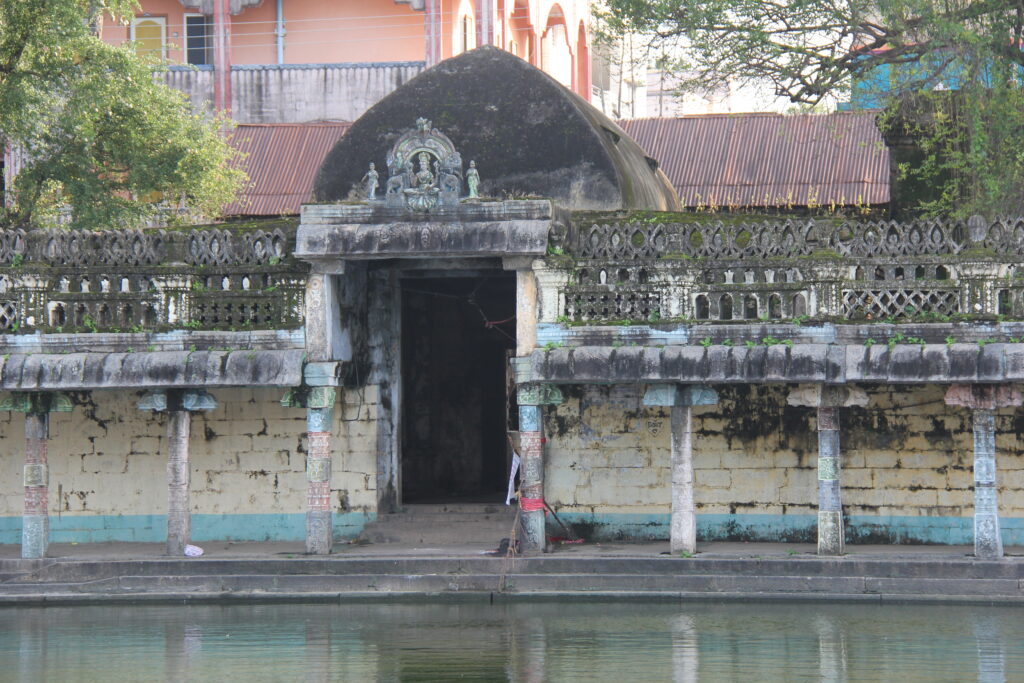
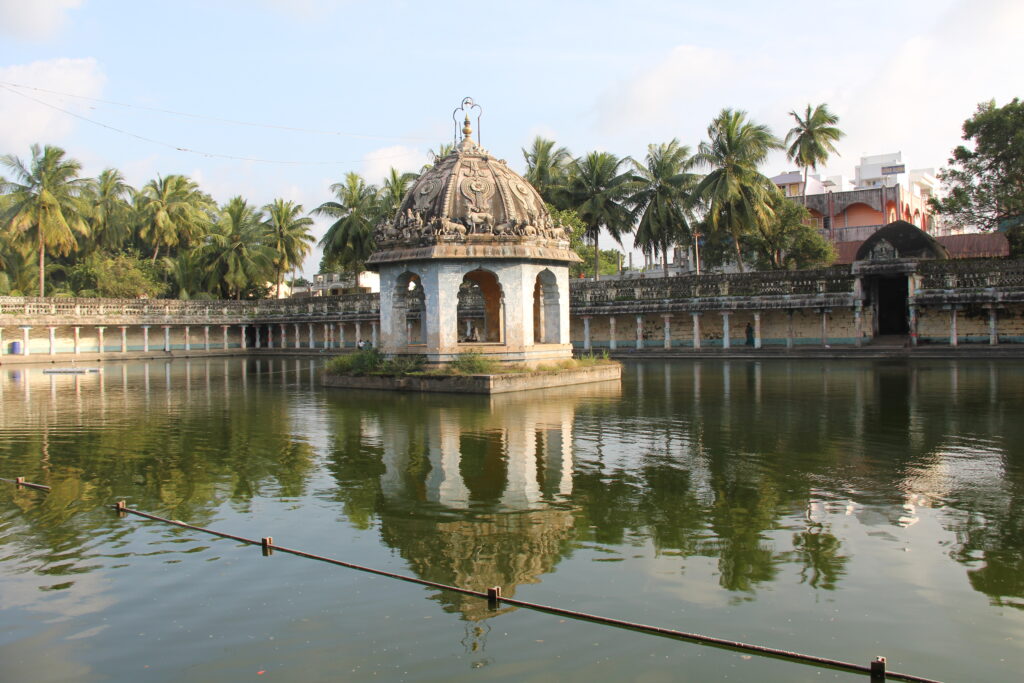
Chidambaram Nataraja temple – This temple was built in the 10th century when Chidambaram was the capital of Chola dynasty. The temple was renovated many times and expanded during the later years. The temple has 9 gopurams. Four of the gopurams are the main entrances to the temple, facing east, west, north, and south. The eastern gopuram wall from where we entered, shows all 108 Bharatnatyam dance postures. The temple complex is spread over 40 acres and the 4 gopurams are huge and colorful. The temple is the fourth largest Hindu temple in the world.
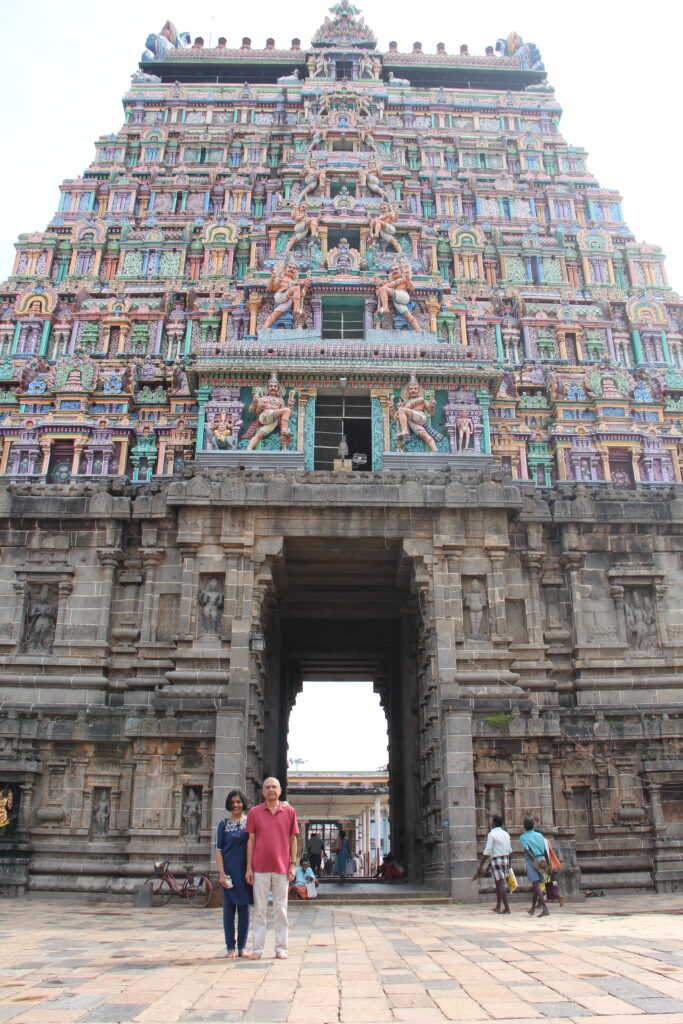

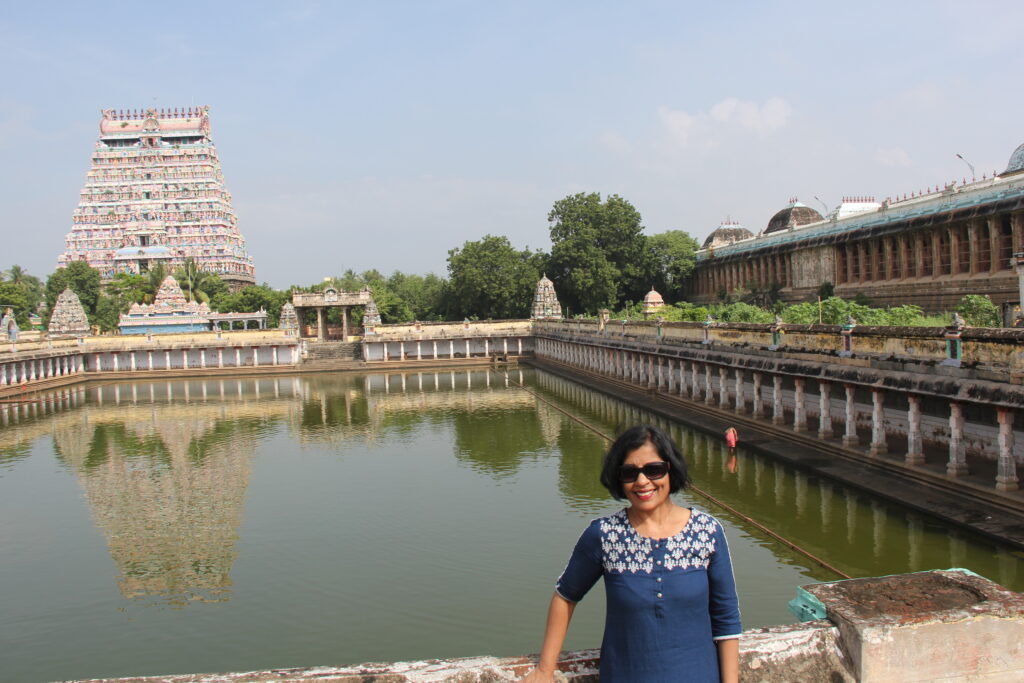
The ceiling of the temple interior had beautiful and Colorful paintings. The courtyard around the shrine had some stunning pillars with the walls below the pillar carved with reliefs showing dancers and musicians.
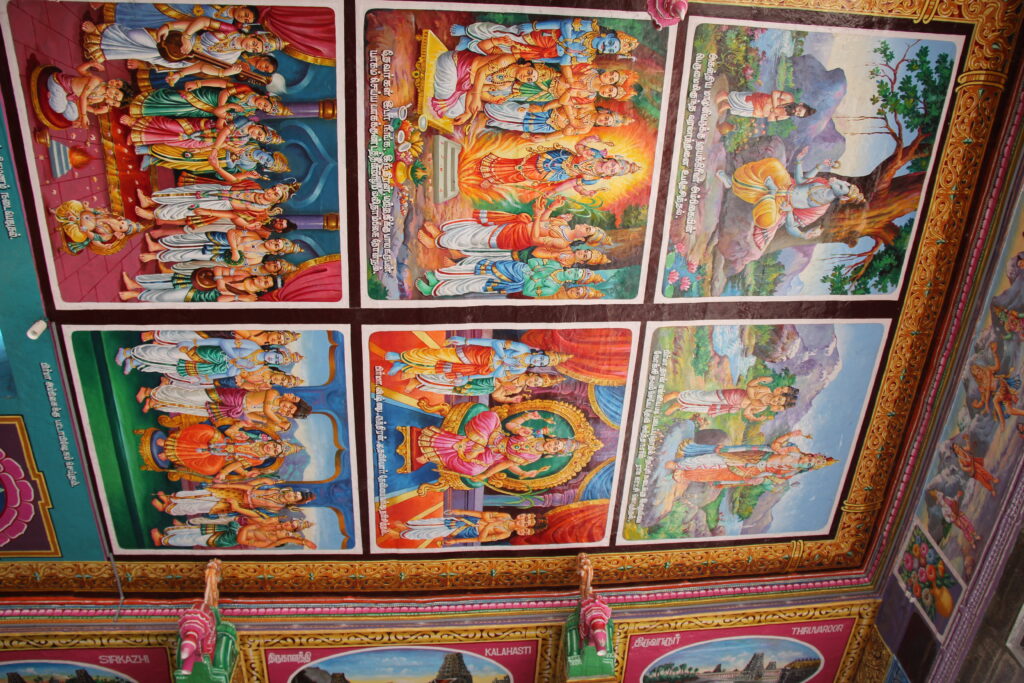
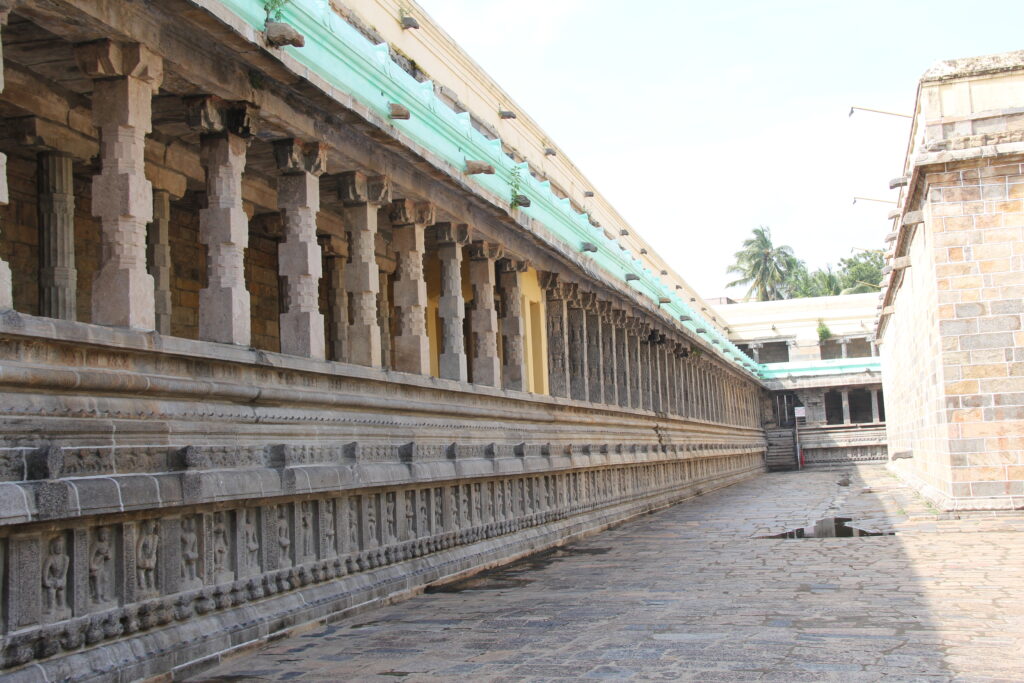
This is the only temple in Tamil Nadu that is managed by the Deekshadars (Priests) of the temple. This temple is one of the ‘pancha bootam’ lingams depicting Akasha or sky. On the day we visited the temple, the dancing idol of Shiva was decorated with so much flower and garments that even from 12 feet away, all we could see were the face, one arm and one leg !!